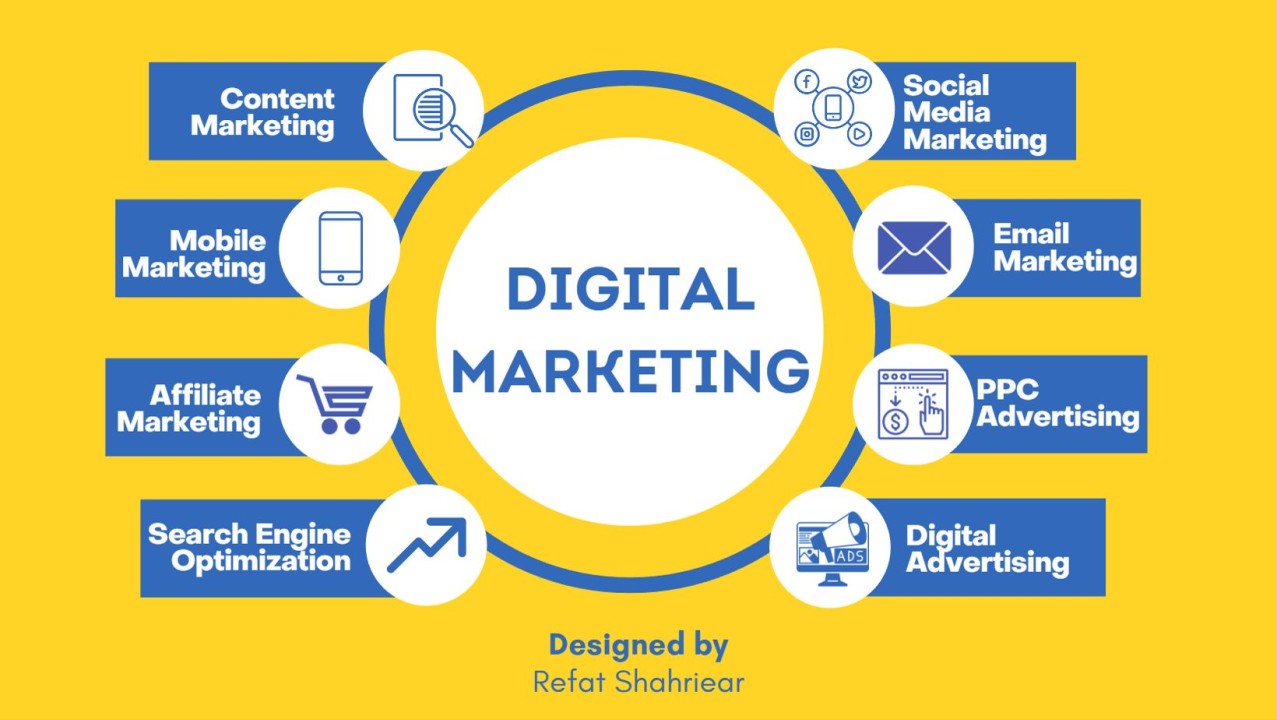Drive Development with Digital Marketing Carlsbad: Your Path to Online Prominence
Drive Development with Digital Marketing Carlsbad: Your Path to Online Prominence
Blog Article
Enhance Customer Experience and Drive Web Traffic With Receptive Web Design
In today's electronic landscape, where customers are accessing internet sites from a plethora of devices, receptive web layout has become a lot more vital than ever. With its capacity to adapt and perfectly change to various display sizes, receptive design not just boosts individual experience yet also drives traffic to your site.
Why Receptive Web Style Matters
Responsive website design is an essential element of modern web development as a result of its capability to make sure optimal individual experience across numerous devices and screen sizes. With the expansion of mobile phones, tablet computers, and various other smart phones, it has become crucial for internet sites to adjust and offer seamless performance despite the device being made use of.
The key reason that responsive internet style matters is that it enables users to have a constant and pleasurable searching experience, no matter the tool they are using. A receptive web site instantly adjusts its web content, format, and layout aspects to fit the display size and resolution of the tool, making sure that users can quickly interact and navigate with the internet site without any type of inconvenience or disappointment.
Additionally, responsive web design also plays a substantial role in seo (SEARCH ENGINE OPTIMIZATION) Browse engines, such as Google, focus on internet sites that are mobile-friendly and receptive in their search engine result. By including responsive style principles, sites can enhance their presence and position, causing increased natural web traffic and possible consumers.

Boosting Customer Interaction With Responsive Layout
Enhancing individual interaction is a crucial objective of receptive style, as it ensures that customers can conveniently gain access to and communicate with site content on any type of tool. With the boosting use mobile phones and tablets, it is crucial for internet sites to adapt to different display sizes and resolutions. Receptive design enables web sites to immediately adjust their design and web content to provide a smooth customer experience throughout tools.
Among the major ways responsive style enhances customer engagement is by lowering load times. With a responsive website, users do not need to await different mobile variations to lots, resulting in faster accessibility to content. This enhanced speed brings about higher individual fulfillment and motivates them to spend more time on the website.
Furthermore, responsive design boosts user involvement by improving navigation and interface (The Ad Firm Web Design). When a web site is developed responsively, menus and buttons are maximized for touch communications, making it simpler for users to communicate and navigate with the website on their mobile tools. This instinctive and easy to use experience keeps individuals engaged and urges them to check out more of the website
Moreover, responsive design permits better content exposure and readability. By adapting the design and font style dimensions to various devices, receptive internet sites make sure that users can easily comprehend the web content and read. This enhances customer engagement by decreasing the demand for zooming or scrolling to review the text.
Raising Website Web Traffic With Responsive Website Design
With the growing appeal of smart phones, having a web site that is responsive to various display dimensions and resolutions is necessary for driving boosted website traffic. In today's digital landscape, individuals are accessing web sites from a range of gadgets such as mobile phones, tablet computers, and desktop. Each of these tools has different screen More hints dimensions and resolutions, and if your internet site is not designed to adapt to these variations, it can lead to a poor individual experience and a loss of possible web traffic.
Responsive website design makes sure that your website looks and functions ideally across all devices. By utilizing adaptable grids, liquid photos, and media inquiries, receptive style enables your web site to instantly change its navigation, design, and content to fit any type of screen dimension. This implies that individuals will have a smooth surfing experience despite whether they are making use of a huge desktop or a tiny mobile phone computer system.
Crucial Element of Efficient Responsive Layout
Effective receptive design integrates numerous essential elements that ensure a seamless user experience across various devices. Among these components is adaptable grids and formats. By utilizing relative systems like percentages as opposed to repaired devices like pixels, developers can create formats that adjust and scale to fit various screen sizes. This permits content to be presented in a understandable and aesthetically attractive way on any kind of device.
Another vital component is media questions. These enable designers to apply different styles and formats based upon the characteristics of the user's device, such as display dimension and orientation. By utilizing media queries, developers can enhance the discussion of content for each gadget, making sure that it is quickly obtainable and legible.
Receptive photos are likewise important in efficient responsive style. Photos that are as well big can reduce web page tons times on mobile phones, while images that are too tiny might appear pixelated on larger displays. By utilizing techniques such as responsive picture resizing and lazy loading, designers can guarantee that images are appropriately sized and enhanced for every gadget.
Last but not least, reliable receptive design includes a mobile-first approach. This indicates creating and prioritizing web content for mobile phones initially, and after that broadening and enhancing the style for bigger screens. This technique guarantees that the most important content is quickly accessible on smaller screens, while still offering a rich experience on larger tools.
Best Practices for Carrying Out Responsive Internet Design
Executing receptive internet layout needs cautious consideration of various best methods to ensure an optimum individual experience throughout various gadgets. Below are some key ideal practices to adhere to when carrying out receptive website design.
Firstly, it is vital to prioritize mobile customers. With the increasing dominance of mobile gadgets, creating for mobile-first has actually ended up being necessary. Beginning deliberately for smaller displays and afterwards considerably boost the design for larger screens.

An additional crucial finest practice is to enhance images for various screen resolutions. Big images can decrease the loading time of your website, specifically on mobile phones with slower connections. Use receptive images that can be resized based upon the device's display resolution to enhance performance.
Additionally, examination your web site on various devices and display sizes linked here to ensure a regular and seamless experience. There are numerous testing devices available that can assist you recognize any issues and make required modifications.
Finally, prioritize functionality and availability. Guarantee that your web site is very easy to navigate, with clear and concise content. See to it that your internet site is easily accessible to people with disabilities and complies with ease of access website development software guidelines.
Final Thought
In final thought, receptive web design plays a vital duty in boosting customer experience and driving traffic to internet sites. By embracing receptive layout principles, websites can make sure ideal viewing experiences across different tools, leading to raised customer engagement.
Maximizing individual involvement is a vital objective of responsive design, as it guarantees that users can conveniently access and engage with website content on any kind of gadget. Receptive design makes it possible for sites to instantly readjust their format and material to give a smooth user experience across tools.
In addition, responsive design boosts customer engagement by enhancing navigating and individual interface.Responsive photos are likewise critical in reliable receptive design. By embracing responsive layout principles, sites can make certain optimal viewing experiences throughout different gadgets, leading to increased user involvement.
Report this page